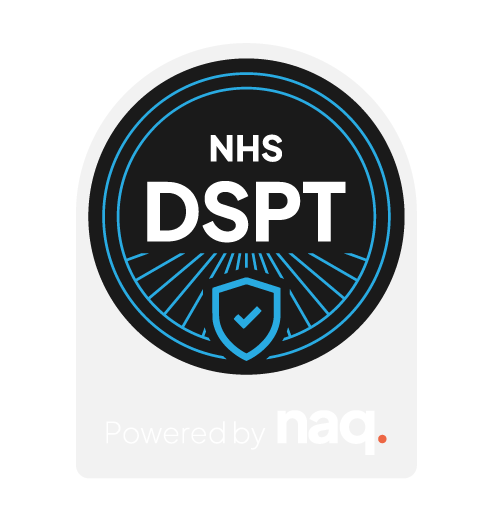If you've been through an Ofsted inspection recently, you've probably noticed it's not just about whether paperwork exists. Inspectors want to know how care is actually being delivered — not just what your policies say, but how your staff make decisions, manage risks, and keep children safe day-to-day. That means they're looking closer, asking more detailed questions, and expecting real evidence to back everything up.
They're checking how often risk assessments are reviewed, whether staff are following agreed behaviour strategies, how medication errors are dealt with, and whether there's a clear plan for each young person's development. It's no longer about having a few good examples — they want to see that your systems work every single day, not just on inspection day.
Why the Pressure Has Increased for Children's Homes and Supported Accommodation
There's been a national push to improve standards in residential care. After several high-profile safeguarding failures, Ofsted has shifted towards more rigorous inspections — and that includes supported accommodation too, especially now that 16+ services are being regulated under the new framework.
This means more scrutiny. More accountability. And more expectation that services are properly documenting what they do — in real time. It's not enough to say "we know our young people well." You have to show it. You have to be able to prove that plans are followed, incidents are responded to correctly, staff are trained and briefed, and homes are being led well.
What Trips Most Homes Up — and It's Not the Care
From what we've seen, most homes aren't failing because of poor care. They're failing because of missing or inconsistent records. Risk assessments that haven't been updated. Medication logs that don't match. Safeguarding reports that were written up late or never followed up. Or a handover where something got missed, and now no one knows who was told what.
This is what lets services down. Not the quality of care — but the gaps in how it's recorded. And that's the kind of thing that leads to "Requires Improvement" or worse.
Key Reality: The majority of inspection failures aren't due to poor care quality, but rather inadequate documentation and record-keeping systems that fail to demonstrate the excellent care being provided.
The Problem with Being Inspection-Ready Only When You Get the Call
Trying to "get everything ready" when you know Ofsted is due only adds more pressure to an already overstretched team. Chasing paperwork, backdating logs, pulling together reports — all of that takes time and headspace away from running the home properly.
Instead, being inspection-ready needs to be part of how the home runs every single day. That doesn't mean doing more admin — it means having systems in place that capture what's already happening in a clear, structured way.
That's exactly what OVcare was built for.
How OVcare Helps Homes Stay Ready — Without Burning Staff Out
OVcare is designed specifically for children's residential settings and supported accommodation. It gives you one central place for incident reports, medication records, risk assessments, shift plans, key work, staff training logs, audits — everything.
So when Ofsted asks:
- "How do you manage risk?"
- "How do you know plans are followed?"
- "What happened during this incident?"
- "How did you hand that over?"
You're not scrambling. You're showing them the evidence in seconds.
OVcare also protects your team. When shift changes happen, when someone's off sick, or when a new staff member joins — the system keeps everything consistent and transparent. That means fewer mistakes, stronger safeguarding, and more time for actual care.
What Inspectors Are Really Looking For
Inspectors want to see that you're in control of your service. That means strong leadership, clear processes, and a real understanding of your young people. A good digital system doesn't replace that — but it supports it. It shows that the service is structured, responsive, and accountable.
It also means when something does go wrong — and it will, because this is a tough sector — you've got the records to show what happened, who did what, and how you followed it up. That protects young people, but it also protects your staff and your registration.
"Being inspection-ready isn't just about good ratings. It's about knowing you're doing things right — not just for Ofsted, but for the young people you're caring for."
Digital Systems Won't Fix Everything — But They'll Give You the Foundation
No platform can replace good care, solid relationships, or a strong team. But it can give you the tools to make that care easier to deliver, easier to track, and easier to prove. Especially when Ofsted is asking for more than ever before.
If your home or service is still running on paper, Word documents, or scattered spreadsheets, you're leaving yourself exposed — and not just during inspections. Digital isn't the future anymore. It's the present.
Ready When Ofsted Knocks — or When Something Serious Happens
Being inspection-ready isn't just about good ratings. It's about knowing you're doing things right — not just for Ofsted, but for the young people you're caring for. It means that if a complaint is made, or something goes wrong, you've got your records straight. You're not guessing, you're not backtracking — you're showing what happened, clearly and professionally.
And when your whole team can rely on the same system — whether they've been there for years or are just covering a shift — everyone works safer, smarter, and with more confidence.
The Bottom Line: Modern inspection expectations require modern systems. Don't wait until the next inspection call to get your digital house in order — make inspection-readiness part of your daily operations.




